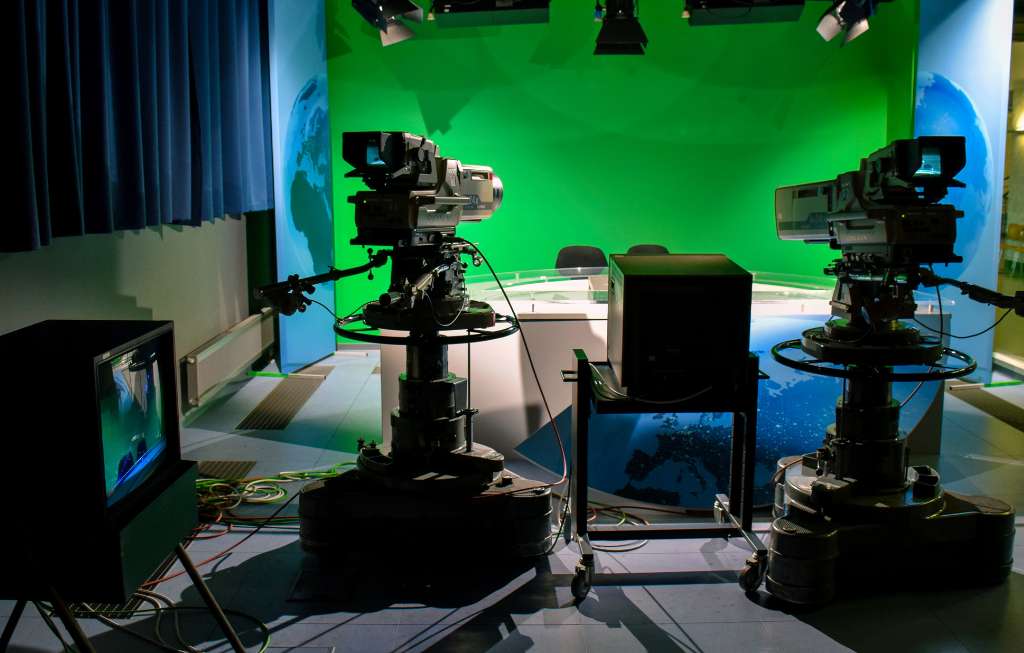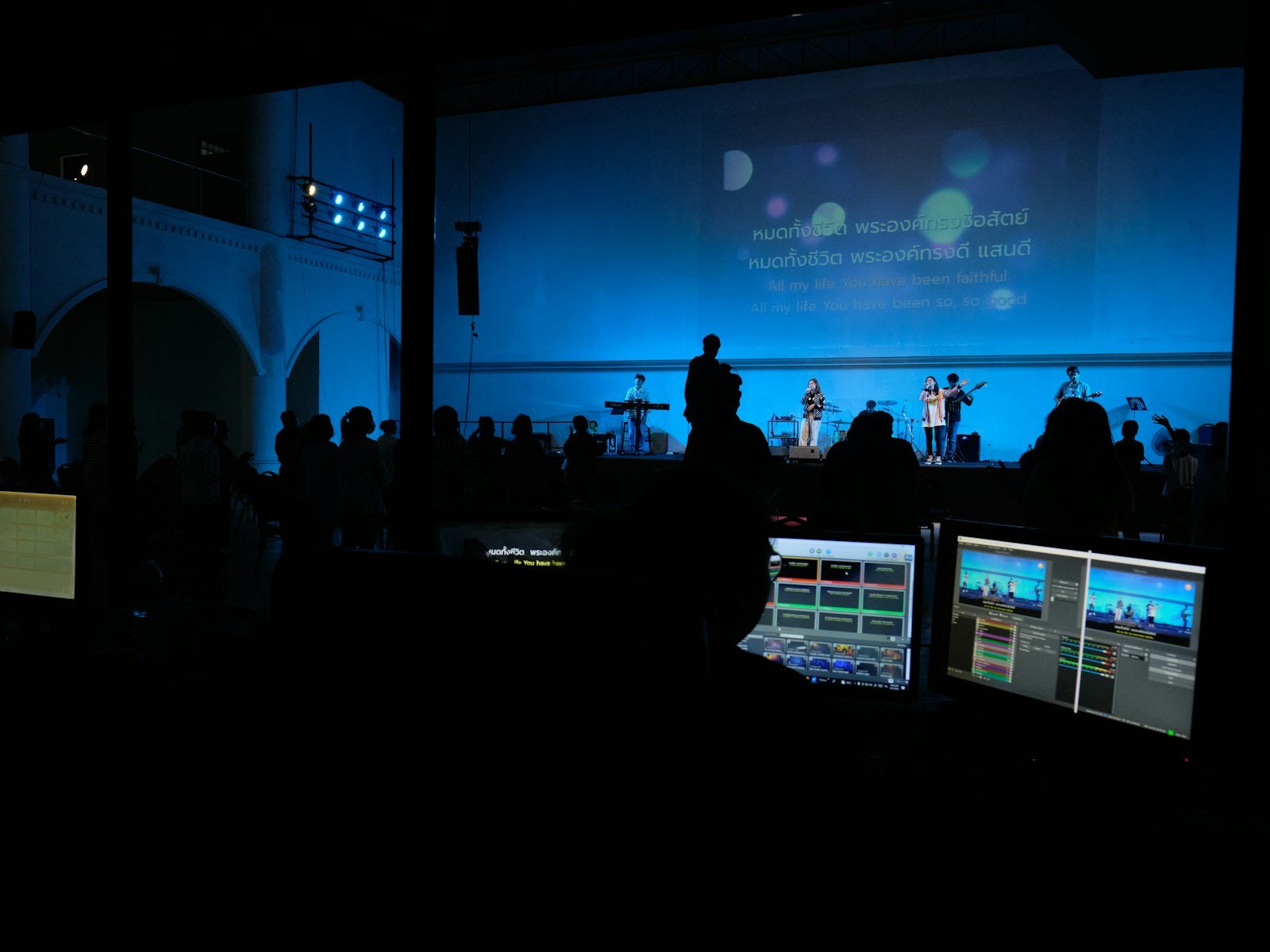Imagine stepping into a world where reality blends seamlessly with imagination, where the lines between the physical and the virtual are blurred. Virtual Studio Innovation is here to revolutionize the way we experience entertainment, education, and even work. With cutting-edge technology and immersive environments, this innovative concept takes you on a journey beyond your wildest dreams. Get ready to be transported into a realm where possibilities are limitless and the future is within your grasp. Buckle up and prepare to experience the future like never before. The advent of virtual studios has revolutionized the way we create and experience visual media. These sophisticated setups allow for the seamless blending of real and virtual worlds, enabling a whole new level of creativity, flexibility, and efficiency in various industries.

Understanding Virtual Studios
A virtual studio is essentially a controlled environment where real actors and props are combined with virtual elements, creating a visually compelling and immersive experience. Through the use of advanced technologies such as virtual reality (VR), computer-generated imagery (CGI), and augmented reality (AR), virtual studios enable the creation of realistic and dynamic sets, often surpassing the limitations of traditional physical studios.
Historical Development of Virtual Studios
The concept of virtual studios has roots in the early days of filmmaking, where painted backdrops and matte paintings were used to create illusionary settings. However, it was not until the late 20th century that the technology caught up with the imagination. The development of chromakey technology, which allows for the extraction of a specific color range and replacing it with another image or video, paved the way for the birth of virtual studios as we know them today.

The Concept of Green Screen Backdrop
One of the key components of a virtual studio is the green screen backdrop. This specially colored surface serves as a canvas on which virtual elements can be added or actors can be placed in front of virtual backgrounds. By shooting actors against a uniformly colored backdrop, the green screen allows for easy extraction of the foreground elements, creating a blank canvas for virtual elements to be inserted.
The Technology Underpinning Virtual Studios
In order to fully comprehend the workings of virtual studios, it is important to understand the technologies that underpin them.
Understanding Virtual Reality
Virtual reality is a simulated experience that can be similar to or completely different from the real world. By immersing the user in a three-dimensional, computer-generated environment, VR enables a heightened sense of presence and interaction with virtual objects, making it an integral part of virtual studio setups.
Role of CGI in Virtual Studios
Computer-generated imagery, or CGI, refers to the process of creating visual content with the aid of computer software. CGI plays a vital role in virtual studios by generating realistic virtual objects, environments, and characters. From breathtaking landscapes to fantastical creatures, CGI brings the virtual world to life within the confines of a virtual studio.
Understanding Augmented Reality
Augmented reality, or AR, is a technology that overlays virtual content onto the real world, enhancing the user’s perception and interaction with the environment. In virtual studios, AR can be employed to seamlessly integrate virtual elements with the physical space, allowing for real-time interaction between actors and virtual objects.

Components of a Virtual Studio
To set up a virtual studio, several key components are required to ensure the smooth functioning of the system.
Importance of Optical Tracking System
An optical tracking system is crucial in virtual studios as it allows for the precise tracking of camera and actor movements. By tracking the position and orientation of various objects in real-time, the system ensures that virtual elements align seamlessly with the physical space, creating a cohesive and believable environment.
Understanding Chromakey Technology
Chromakey technology, often referred to as green screen technology, is an essential component of virtual studios. By shooting actors against a green backdrop, the chromakey technology enables the extraction of the green color and the subsequent substitution with virtual backgrounds or elements.
Role of Virtual Set Software
Virtual set software is responsible for creating and managing virtual sets within a virtual studio. This software allows for the easy integration of virtual elements and provides real-time rendering capabilities, ensuring that the virtual environment reacts dynamically to the movements of actors and cameras.
Setting Up a Virtual Studio
Setting up a virtual studio requires careful consideration of various factors, including space requirements, essential equipment, and budgeting.
Understanding Space Requirement
Virtual studios can vary in size depending on the specific needs of the production. Larger studios offer more freedom of movement and accommodate complex setups, whereas smaller studios are more suitable for intimate scenes or individual shots. It is important to assess the space requirements based on the intended usage and the availability of physical space.
Essential Equipment
While the specifics may vary, a typical virtual studio setup requires several essential pieces of equipment. This includes high-quality cameras capable of capturing high-resolution footage, a green screen backdrop, lighting equipment, optical tracking systems, and powerful computers to handle the rendering of virtual elements in real-time.
Budgeting and Cost Consideration
Building and maintaining a virtual studio can involve significant costs. From the initial investment in equipment to ongoing maintenance and upgrade requirements, it is crucial to create a detailed budget and consider the long-term financial implications. However, virtual studios can also offer savings in the long run by reducing the need for physical set construction, location shoots, and other logistical expenses.
Challenges and Solutions in Virtual Studios
While virtual studios offer numerous advantages, they also present unique challenges that need to be addressed for a successful production.
Identifying Issues in Setup
Setting up a virtual studio involves complex technology integration, and issues may arise that hinder the seamless functioning of the system. From calibration errors to software compatibility issues, it is important to identify and resolve these issues as early as possible to ensure smooth operation.
How to Resolve Lighting Issues
Lighting plays a crucial role in virtual studios, as it affects the quality and realism of the final output. However, integrating real and virtual lighting can be challenging. Proper lighting techniques and careful coordination between the physical and virtual elements are essential to maintain consistency and ensure that virtual objects and actors blend seamlessly.
Minimizing Latency, the Biggest Challenge
One of the biggest challenges in virtual studios is latency, the delay between the input and output of the system. Even a slight delay can disrupt the real-time synchronization between actors and virtual elements, resulting in an unrealistic and disjointed experience. Minimizing latency requires powerful hardware, efficient software optimization, and a robust network infrastructure.
Innovations in Virtual Studio Technology
Virtual studio technology is constantly evolving, with new developments pushing the boundaries of what is possible.
Latest Developments in Technology
Advancements in areas such as real-time rendering, motion capture, and haptic feedback are revolutionizing virtual studios. Real-time ray tracing, for example, allows for more realistic lighting and reflections, while improved motion capture technology enables more accurate tracking of actor movements. These developments enhance the overall realism and immersion of virtual studio productions.
Role of AI and Machine Learning
Artificial intelligence (AI) and machine learning have also found their way into virtual studios, facilitating tasks such as facial animation, character modeling, and real-time compositing. AI-powered algorithms can analyze and interpret data in real-time, allowing for dynamic adjustments and responses to changing conditions within the virtual environment.
Impact of 5G on Virtual Studio Tech
The rollout of 5G networks is set to have a significant impact on virtual studio technology. With faster and more stable network connections, the transmission of high-definition video and real-time rendering of virtual elements will become smoother and more efficient. This will open up new possibilities for remote collaboration, live streaming, and distributed virtual productions.
Virtual Studios in Different Industries
Virtual studios have made their mark in various industries, revolutionizing the way visual media is created and experienced.
Virtual Studios in Film and TV Production
In the film and TV industry, virtual studios offer unparalleled creative freedom and cost efficiencies. The ability to create realistic virtual sets and environments opens up a whole new realm of possibilities, eliminating the need for expensive physical set construction and location shoots. Virtual studios also allow for easier integration of visual effects and post-production enhancements, reducing the time and resources required for complex editing processes.
Virtual Studios in Gaming Industry
The gaming industry has embraced virtual studios as a means to create immersive virtual worlds. By combining real actors with virtual environments, game developers can create lifelike characters and breathtaking landscapes that blur the line between reality and fiction. This level of immersion enhances the gaming experience, offering players a sense of presence and interactivity like never before.
Impact of Virtual Studios in Business Presentations and Conferencing
Virtual studios are also impacting the way businesses communicate and collaborate. With the rise of remote work and virtual meetings, virtual studios offer a more engaging and professional platform for business presentations and conferences. By providing virtual backgrounds and dynamic visual elements, virtual studios can elevate the overall quality and impact of virtual meetings, making them more memorable and effective.
Benefits of Using a Virtual Studio
The adoption of virtual studios comes with several benefits that have made them increasingly popular across industries.
Affordability and Flexibility
Virtual studios offer significant cost savings compared to traditional physical studios. The ability to create virtual sets and environments eliminates the need for costly set construction, location shoots, and logistical expenses. Additionally, virtual studios are highly flexible, allowing for quick and easy adjustments to sets, lighting, and visual effects, reducing production time and costs.
Enhanced Creativity
Virtual studios open up a world of creative possibilities. The ability to seamlessly blend real and virtual elements allows for the creation of visually stunning and imaginative environments. From fantastical landscapes to futuristic cityscapes, the only limit is the imagination, leading to more unique and visually striking productions.
Faster Production Time
Virtual studios streamline the production process, offering faster turnaround times without compromising on quality. By reducing the need for physical set construction and location shoots, virtual studios allow for quicker setup and teardown times. Real-time rendering capabilities and efficient post-production workflows further accelerate the production process, enabling faster delivery of the final product.
Virtual Studio vs Traditional Studio
While both virtual studios and traditional physical studios have their merits, there are some distinct differences that set them apart.
Comparing Cost Implications
Virtual studios offer significant cost savings compared to traditional studios. The elimination of physical set construction and the reduced need for location shoots drastically reduces production costs. However, virtual studios require an initial investment in technology and ongoing maintenance costs, which need to be factored into the overall budget.
Flexibility in Design
Virtual studios offer unparalleled flexibility when it comes to set design. The ability to quickly adjust sets, lighting, and visual effects can greatly enhance creative possibilities and streamline production workflows. Traditional studios, on the other hand, offer more tangible physicality and can provide a more authentic experience.
Assessing Quality of Production
The quality of the production in both virtual and traditional studios largely depends on the skill and expertise of the production team. While virtual studios offer the advantage of dynamic virtual elements and seamless integration of visual effects, traditional studios provide a more traditional and tangible approach to set design and production. The choice between the two ultimately depends on the specific requirements and creative vision of the project.
The Future of Virtual Studios
The future of virtual studios looks promising, with advancements in technology and a growing demand for immersive and interactive experiences.
Predicting Future Developments
As technology continues to evolve, virtual studios will become more sophisticated and accessible. The integration of AI and machine learning will further enhance real-time rendering, dynamic lighting, and virtual character interactions. Additionally, advancements in haptic feedback technology may allow for more immersive and tactile experiences within the virtual environment.
Addressing Future Challenges
While virtual studios have come a long way, challenges remain. Overcoming latency issues and improving real-time synchronization will continue to be a focus for developers. Additionally, refining the integration of physical and virtual lighting, as well as improving the realism of virtual objects and characters, will be crucial in creating more believable virtual experiences.
Opportunities for Innovation
The continued development of virtual studio technology presents ample opportunities for innovation. From creating virtual experiences for education and training to revolutionizing live performances and events, the possibilities are endless. Virtual studios provide a platform for creative exploration and experimentation, pushing the boundaries of what is possible in the realm of visual media.
In conclusion, virtual studios have ushered in a new era of visual storytelling and media production. Through a combination of advanced technologies, creative ingenuity, and efficient workflows, virtual studios offer unprecedented flexibility, cost efficiencies, and creative possibilities. As technology continues to evolve, the future of virtual studios holds even more exciting opportunities for innovation and immersive experiences. So buckle up and get ready to experience the future firsthand in the mesmerizing realm of the virtual studio.







